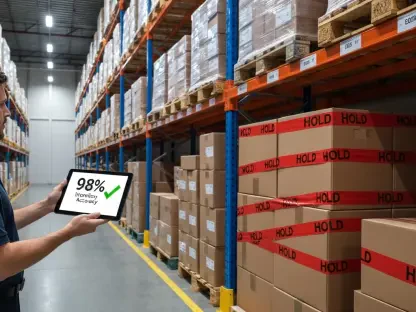With the less-than-truckload (LTL) freight industry navigating significant overhauls, stakeholders are focused on adapting to density-based changes in National Motor Freight Classification (NMFC). The transformation is projected to enhance efficiency and cost-effectiveness while posing a challenge to integrate seamlessly. Understanding these market shifts is crucial to capitalize on opportunities and address potential hurdles for businesses in logistics and transportation.
Revisiting Freight Classification: A New Approach
The shift towards density-centered classification introduces an industry-wide change that harmonizes freight handling. Historically, freight classification relied on multiple metrics such as stowability, liability, and handling requirements, complicating the process and occasionally leading to ambiguous solutions. By streamlining this with a singular focus on density, the NMFC aims to mitigate these complexities, ensuring more precise, predictable outcomes for shipping entities.
Examining Trends: Efficiency and Challenges in Transition
Industry experts have noted a trend toward greater efficiency as density becomes a standardized measure for defining freight classes. This simplifies the categorization process, reducing unexpected fees and disputes related to misclassification. Furthermore, the adoption of density-based classification supports increased trailer packing efficiency, aligning with growing environmental initiatives. Nonetheless, transitioning businesses face hurdles in adapting from traditional classification methods—a process requiring education and strategic planning.
Projections: Evolving Practices and Technological Integration
Forecasts indicate technology’s pivotal role in facilitating the new classification model. The rise of automated systems and integrated platforms is expected to transform how shippers and carriers interact, enhancing precision and reducing operational overhead. In this context, innovations such as applications integrating NMFC changes with shipment analytics may redefine logistics strategies, fostering a cycle of continuous improvement within the LTL sector.
Strategic Implications: Positioning for Optimal Outcomes
Reflecting on the findings, businesses are urged to strategize proactively for these industry changes. Key recommendations emphasize revisiting shipment profiles to align with the density-focused model, investing in advanced technologies that support accurate data inputs, and fostering open communication among logistics partners. Companies that capitalize on these trends can gain significant competitive advantages, adapting to the evolving landscape with agility and foresight.
As firms process these changes, focusing on strategic integration and learning offers paths to success. The shift towards density-based classification stands not only as a momentum shift but an opportunity for shippers and carriers to align operations toward a sustainable, efficient future in freight logistics. Implementing sound practices informed by this analysis will ensure organizations remain at the forefront of this transformative epoch in freight transportation.









